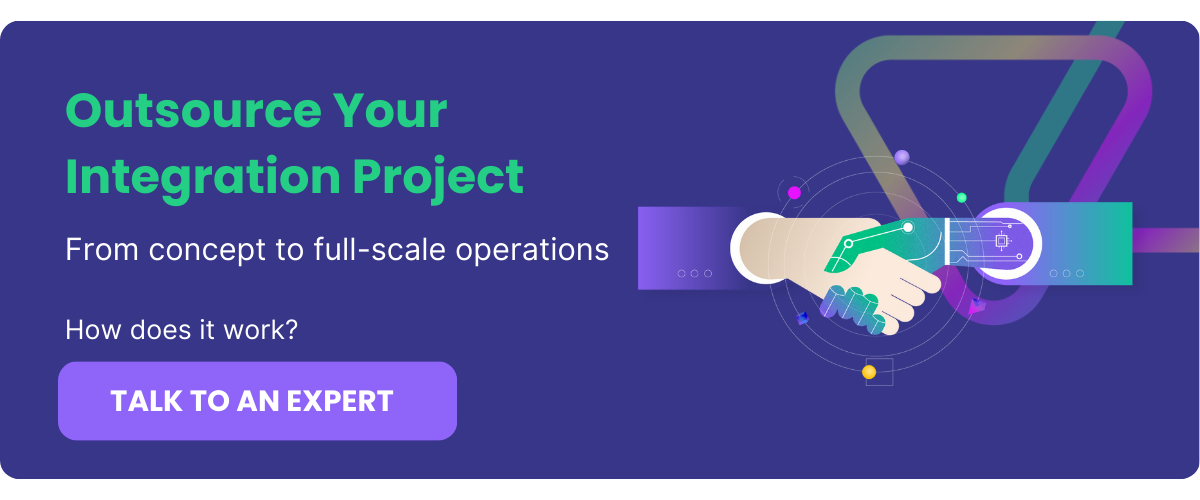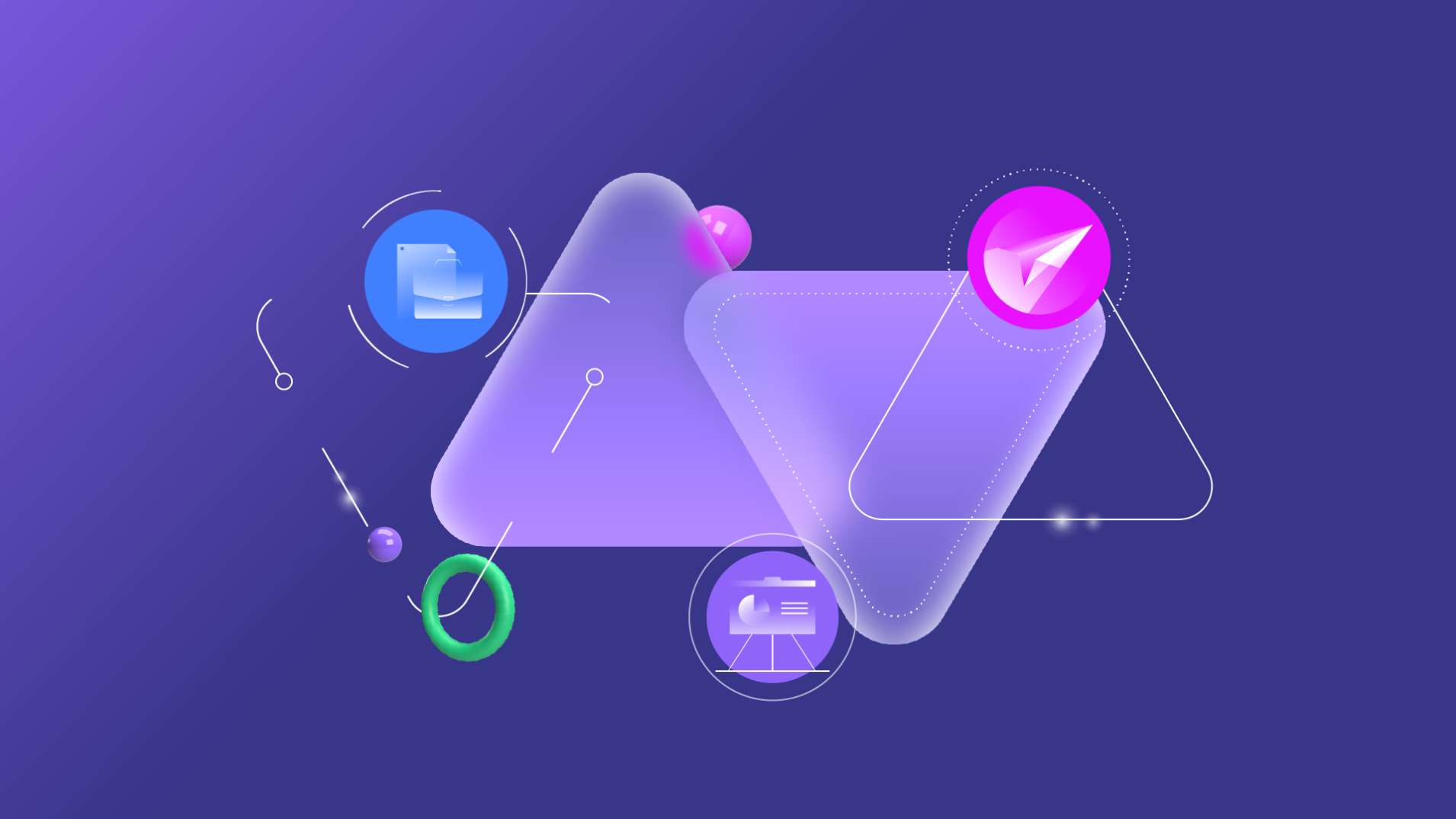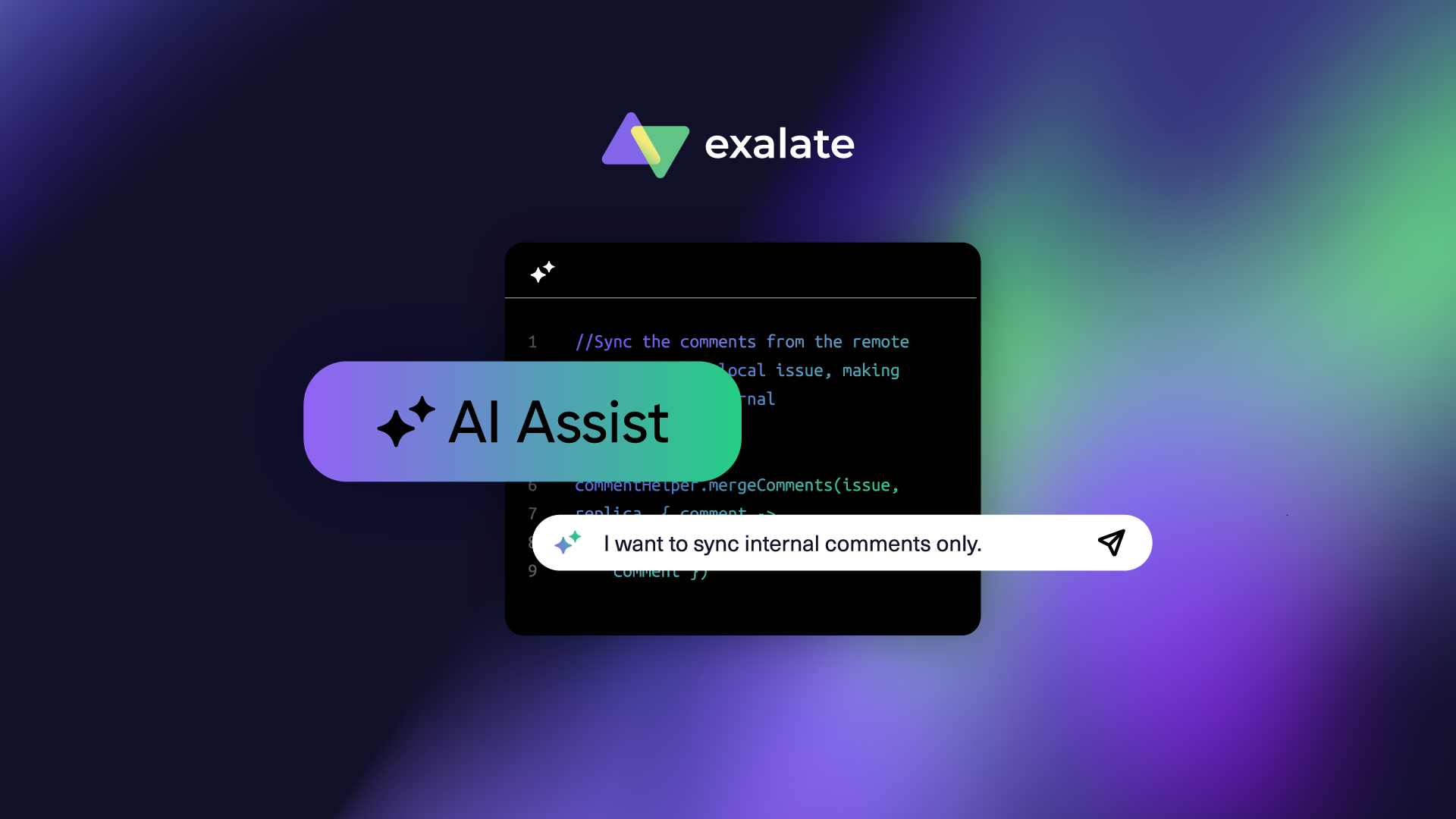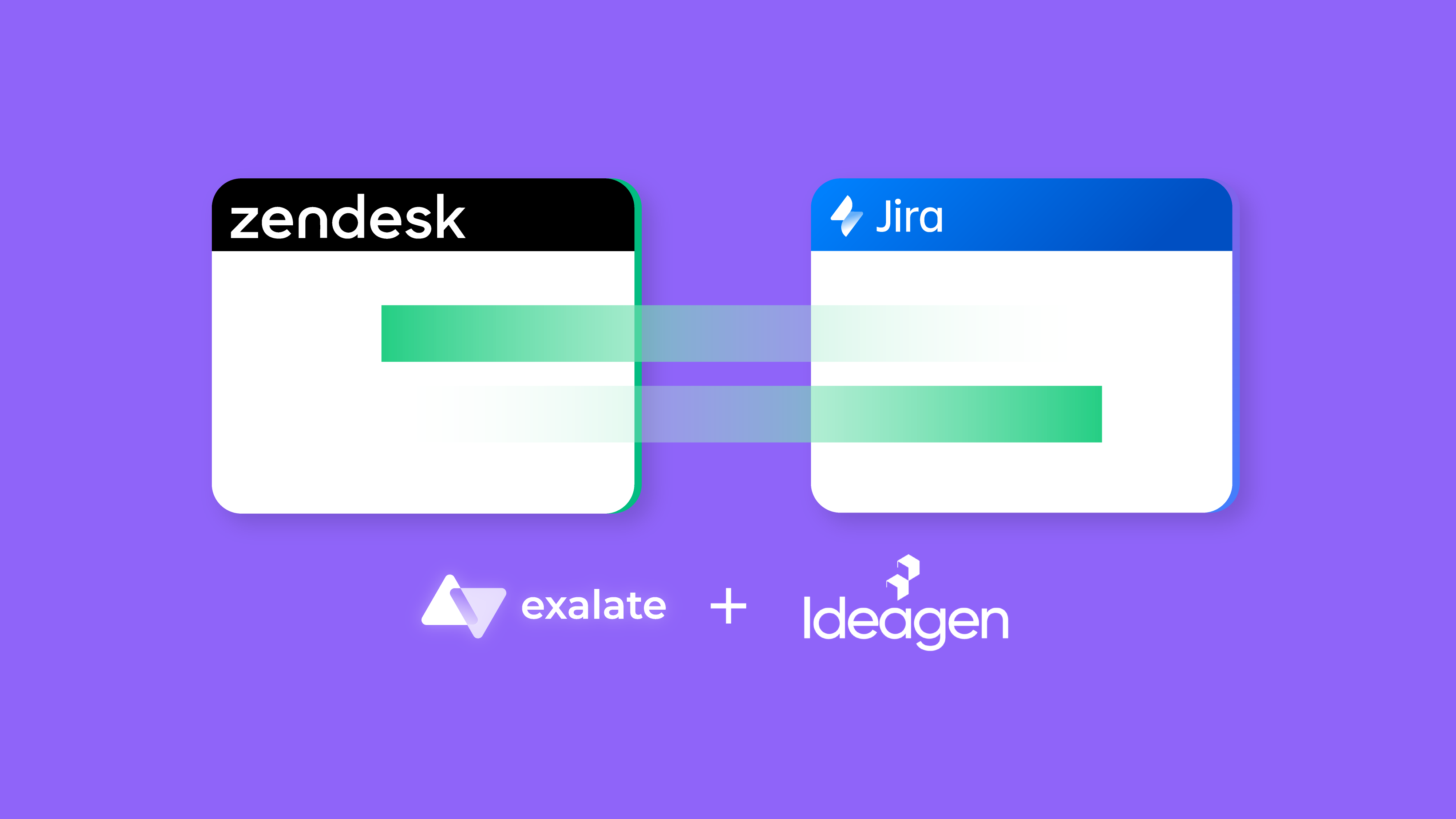In today’s digital world, manual processing is no longer sustainable. So there is a need for businesses to automate, optimize, and integrate their processes. This helps them collaborate and communicate effectively with their customers, partners, and suppliers. In order to do so, an effective B2B integration strategy and solution must be in place.
But before we get to it, it’s necessary to understand B2B integration inside out and this guide serves to do exactly that. It discusses how B2B integration works, its types, its implementation patterns, and how it can improve your revenue-directed business processes. It also throws light on SIAM in the context of B2B integration and how it can help organizations bring value to their customers.
So let’s get started.
What is B2B Integration
The way business works today has changed. You no longer walk toward your supplier across the street to get what you need.
Businesses have become digital, global, and more demanding. To stay on top and increase their efficiency, they choose “best-of-breed” systems that do what they do best. Think of ERP, CRM, SCM, and the like.
And the problem here is that these systems are not meant to inherently cooperate with one another.
Businesses also have to collaborate with multiple different organizations that play the role of their suppliers, partners, vendors, or customers. It also means that every such organization has its own set of applications and systems (ERP, CRM, SCM, and so on).
So when all these different systems playing different roles in a business ecosystem try to exchange information with each other, the different formats, protocols, technologies, and deployment models don’t allow for information to be shared seamlessly.
This is where B2B integration comes into the picture.
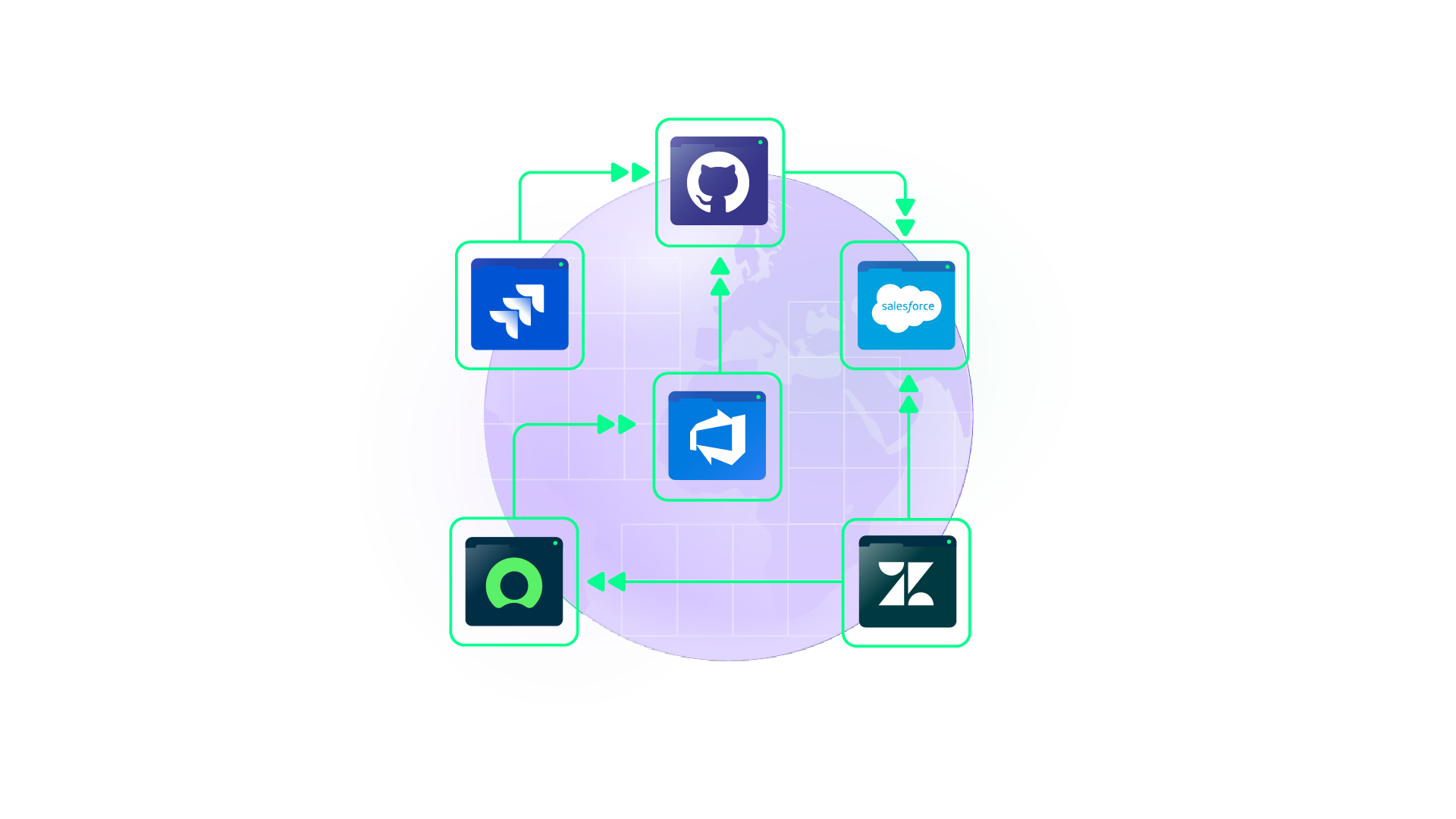
It helps these disparate systems, which don’t possess the inherent technology to communicate, establish communication. It also enables companies to exchange business-critical information within and across their borders automatically and if needed, in real-time as well. It also involves automation and optimization of business processes to help them improve their external relationships with their suppliers or trading partners and integrate processes in supporting these relationships.
Simply put, it’s a digital transformation strategy that companies adopt to enable them to collaborate, communicate, and trade more effectively with 3rd party organizations.
Let us see how the core B2B integration technologies have evolved over time.
The Evolution of B2B Technologies
B2B integration is not a recent term. The first attempt at B2B integration can be found in EDI which emerged in the 1960s.
EDI (Electronic Data Interchange) enabled businesses to exchange files or information electronically. So instead of sending back and forth pieces of paper, you could send documents between companies with the help of EDI Software. A typical structure of this EDI system in a supply chain scenario is given below.
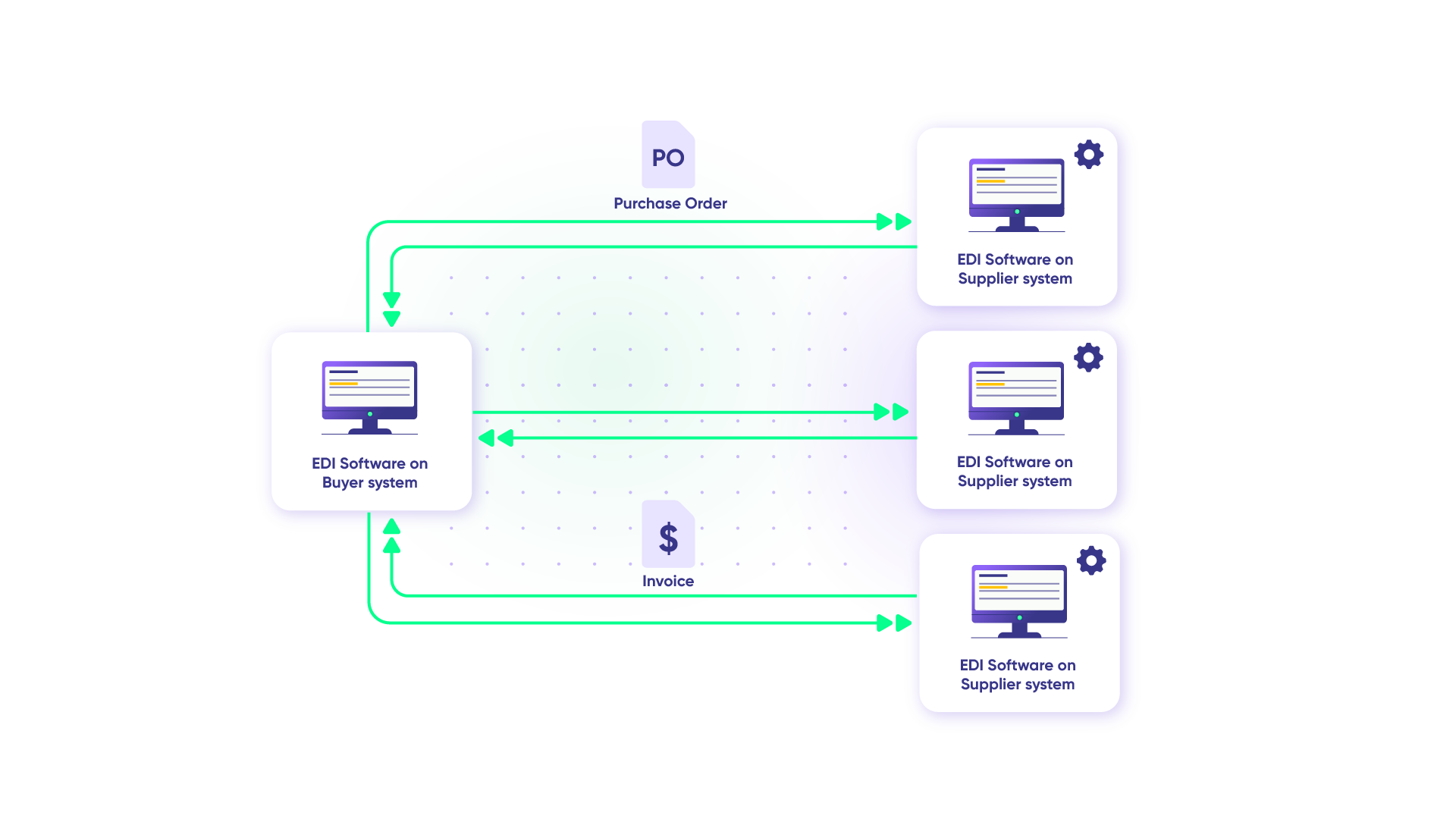
The EDI software allowed companies to bypass manual processes and send documents automatically using a standard EDI format. This reduced human errors.
But there was a major problem with this setup. It was very costly to implement, hence it could not be adopted by small or medium-sized businesses since they simply could not afford it.
The rise of the internet in the 1990s provided an exciting opportunity to exchange information for small and medium-sized businesses. Out of this need, e-marketplaces or e-hubs came into existence. This low-cost option enabled all businesses to come together and communicate over the Internet. Interoperability increased and companies found themselves collaborating more widely and openly.
As the internet matured, the B2B technology paradigm fundamentally shifted.
Protocols like HTTP, FTP, and SMTP opened up new avenues for integrating applications over the Internet.
B2B integration users became increasingly sophisticated in their expectations. It became imperative to not only integrate information but also people and processes.
During this time, XML became a universal standard for representing and exchanging structured data that was independent of any programming language, software platform, or hardware. Its popularity increased and it soon came to be used in EDI exchanges as well.
XML also led to the emergence of web services.
Web services refer to methods for integrating programs through standard XML technologies using unified and open interfaces called Application Programming Interfaces(APIs).
API is a set of routines, protocols, and tools to build software applications and specify how they interact with one another.
Through web services, communication is possible over company intranets, extranets, and the Internet. Since they are platform-independent it helped reduce integration problems between different systems to a large extent.
EDI still remains the backbone of B2B integration, but the advent of new technologies has increased the scope of how businesses now integrate.
To gain a little more insight into what benefits an organization can gain from a B2B integration, let’s delve into it a little deeper in the coming section.
Why you need B2B Integration
We have already seen the need for companies to integrate with one another.
Let’s now take a look at the benefits you can expect from a B2B integration:
- Reduced time, cost, and errors incurred by manual processing of information
- Increased productivity and efficiency due to the automation of key business processes. The workflows of these processes are orchestrated end-to-end
- Possibility to incorporate stringent government and industry compliance requirements through secure and enhanced data integrations
- Increased visibility and comprehensive view of revenue-driven business processes. This results in faster and more efficient decision-making
- Automated and digital movement of business-critical information or files. So there is less rework and increased cash flow.
- Possibility to track, report, monitor, and verify the flow of information throughout the business ecosystem
- A holistic global transformation for the organization is brought about by the integration of disparate systems, data, and applications.
How companies handle B2B Integrations
A key component of these benefits is to connect different applications. This process called “integration”, many times results in companies using a hotchpotch approach for implementing it.
Let’s see how they go about it.
Build it in-house
This is the most obvious approach for any company. But building an integration solution requires immense technical expertise and resources, and can be time-consuming and costly. Such a solution, though robust, is not scalable. Also, maintenance and updates of this solution put added stress on technical resources who would have been better off on other important work.
Peer-to-Peer connections

A spin-off of building the whole integration solution can be to have point-to-point connections with specific suppliers or trading partners. This approach is simple and cost-effective upfront. But as the number of businesses increases, it soon becomes a maintenance nightmare.
Using Native App Integrations
Often apps built nowadays have a certain amount of native integrations they already support. For example, almost every marketing automation tool today connects directly with Salesforce. This can become a convenient approach as it provides the most popular use cases. But it also means that they become static after a point and lack flexibility or additional customization capabilities.
Integration Solutions Providers
Perhaps the most logical outcome of all the above 3 possibilities is looking at integration solution providers who provide integration capabilities. These solutions provide the architecture needed to digitize information and route it through the organization’s trading ecosystems.
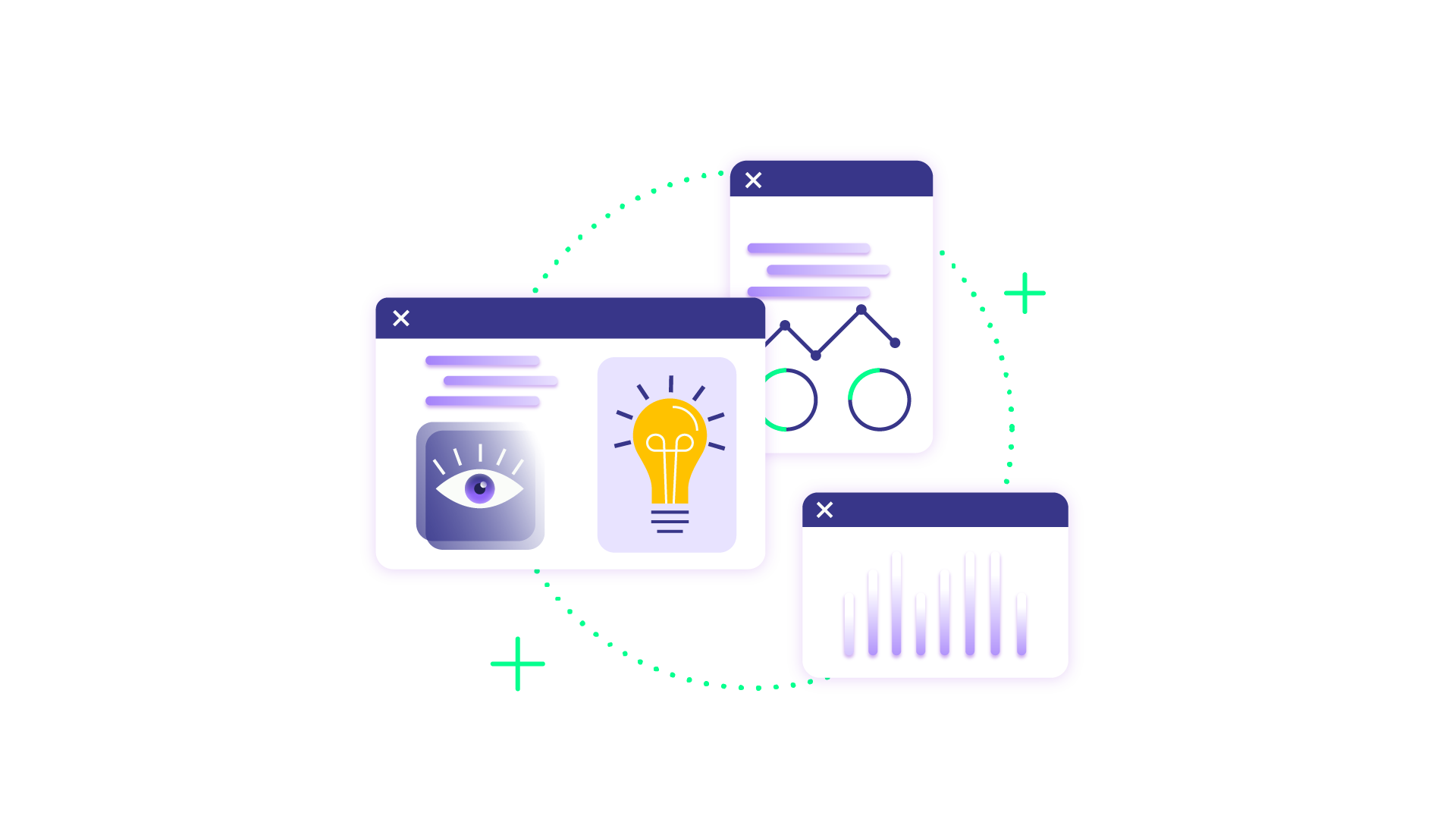
B2B integration platforms are an essential part of these software solutions, wherein they integrate all critical business and EDI processes across their partners, suppliers, and vendor systems using a single gateway.
They help extract data/ information from source applications, process it into respective business process formats, and then send it across to the destination application using appropriate transport protocols.
You can also outsource the A-Z of your integration to these solution providers if you don’t want to deal with the integration hassle yourself.
Types of B2B Integration
The classification of the types of B2B integration is a little tricky, as they often overlap. This is because any type of integration can always have underlying common components or features similar to some other type. Following is the best possible classification.
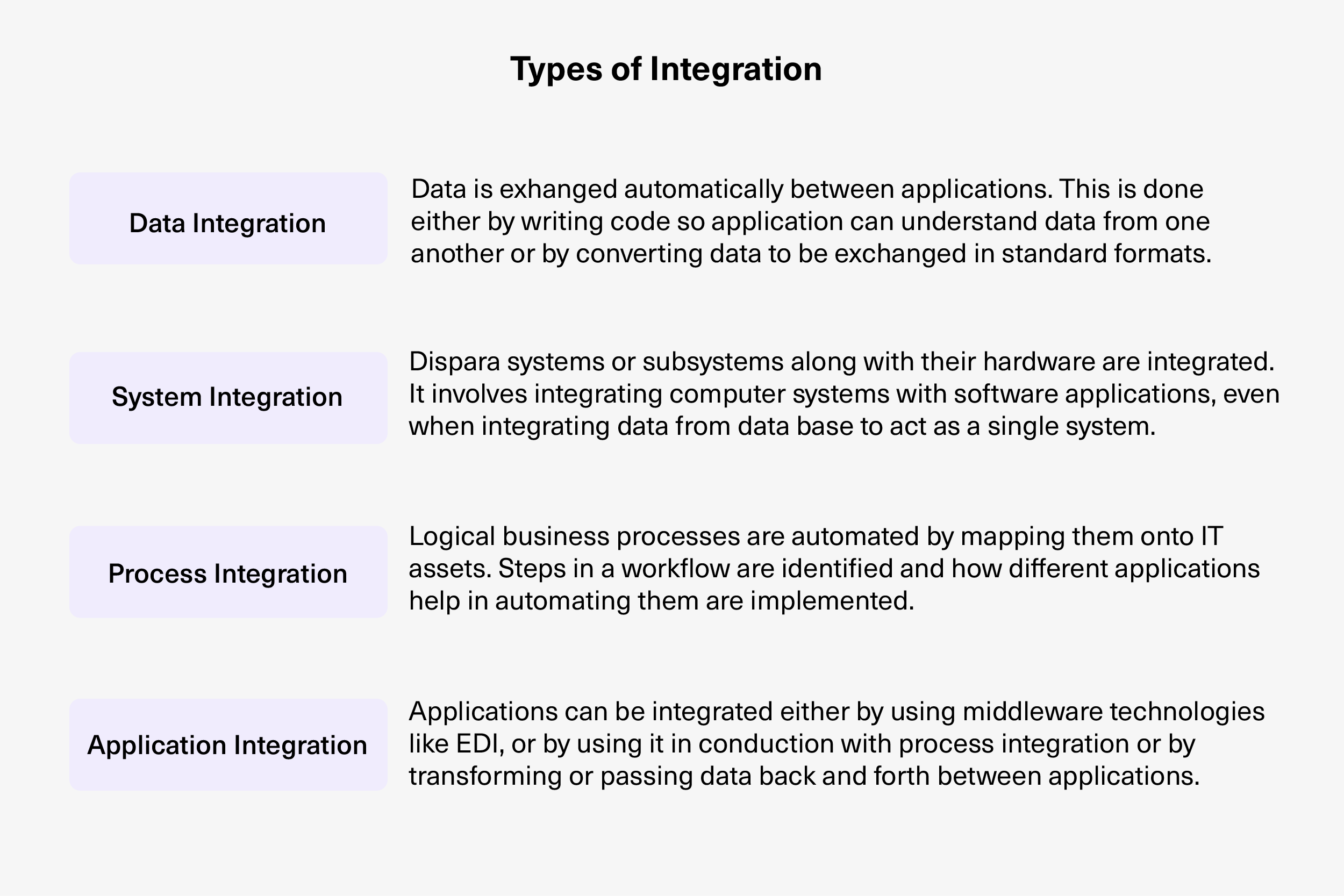
Data Integration
It’s a known fact that different applications existing in the B2B ecosystem cannot read and exchange data inherently. So there is a need for some special solutions/ tools/mechanisms which can make this happen. Such tools enable data to be exchanged automatically between applications for different kinds of transactions like order-to-cash etc.
There are generally 2 approaches to this kind of integration:
Either code is written so that each application understands the data from another application, but frankly, this is too much work.
Another way is to convert the data being exchanged into standardized formats so that each application can read and interpret it easily. Standards like XML are popular for sharing data this way.
System Integration
In this type, disparate systems or subsystems along with their hardware are integrated. It involves integrating computer systems with software applications, even integrating data from databases. The purpose of integrating these different components is to have them act as a single system. Integration of these systems is done to carry out business tasks smoothly.
Process Integration
In this type, the logical business processes are automated by mapping them onto IT assets. Here, steps in a workflow are identified and how different applications will play a role in interacting with and automating these steps is implemented. This leads to much faster delivery of goods or services and reduces errors of manual intervention.
Application Integration/ EAI (Enterprise Application Integration)
Companies and their trading partners often use CRM, ERP systems, etc, that are hosted on-premise or as cloud apps, to address their business needs. Because these applications aren’t designed to talk to one another, there is a need for technology to do so.
Application integration is achieved using the following ways:
- By presenting the different applications as one single application having a common UI (user interface)
For this approach, some companies choose to integrate their applications using middleware technologies for collecting data entered by users in web pages/UI, others might build point-to-point integrations, and still, others can leverage APIs and web services - By being used along with data integration
So that different applications can exchange and understand data passed between them. It also means seeing how applications want to interact with each other, for instance, whether they simply want a file transfer between them, or they want a request/ reply mechanism or just pass data back and forth.
Applications when integrated can deliver a comprehensive view of business-critical processes and data, driving revenues and eliminating information silos.
Integrating applications can support different use cases in the business ecosystem- like dispute resolution and trading partner onboarding.
Application integration tools can also include traceability and audit control to check if any SLAs are missed.
Cross-company Integration
This is a spin-off of application integration which essentially works towards integrating different applications (like issue trackers, CRM, work management systems, etc) to exchange business-critical information between them. This information exchange is bi-directional, real-time, and automatic.
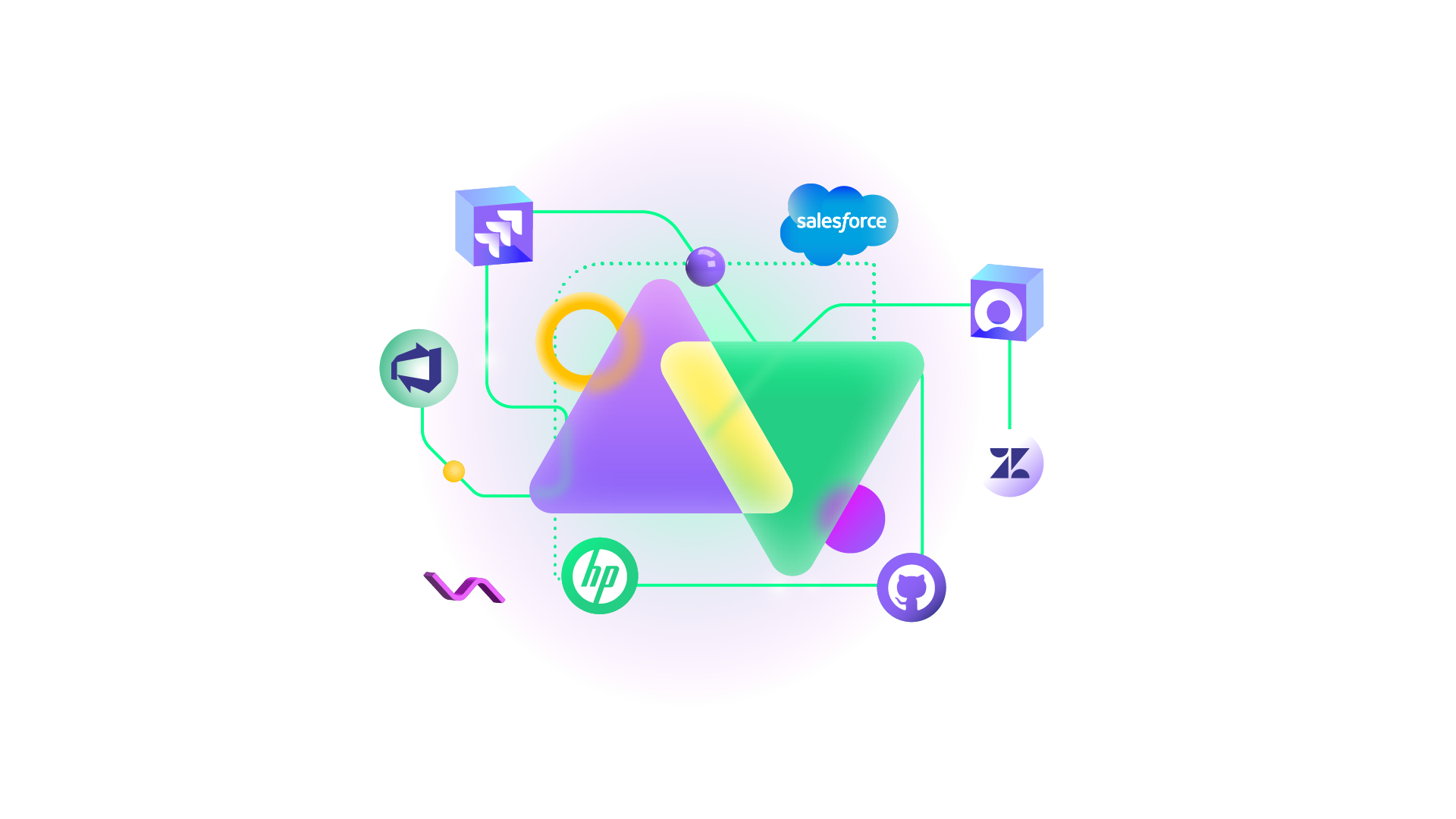
Exalate, for instance, is a cross-company integration solution that allows different work management systems (like Jira, ServiceNow, Azure DevOps, Zendesk, Salesforce, and more) to bi-directionally sync data with one another.
Deciding on the type of integration for your organization completely depends on your use case. This is because every business has different demands and processes, so choosing one or a combination of these types is solely a decision you make with industry experts based on your specific needs.
B2B Integration Use cases
Here’s a use case to help you understand why and how companies can really benefit from a B2B Integration.
Use Case 1
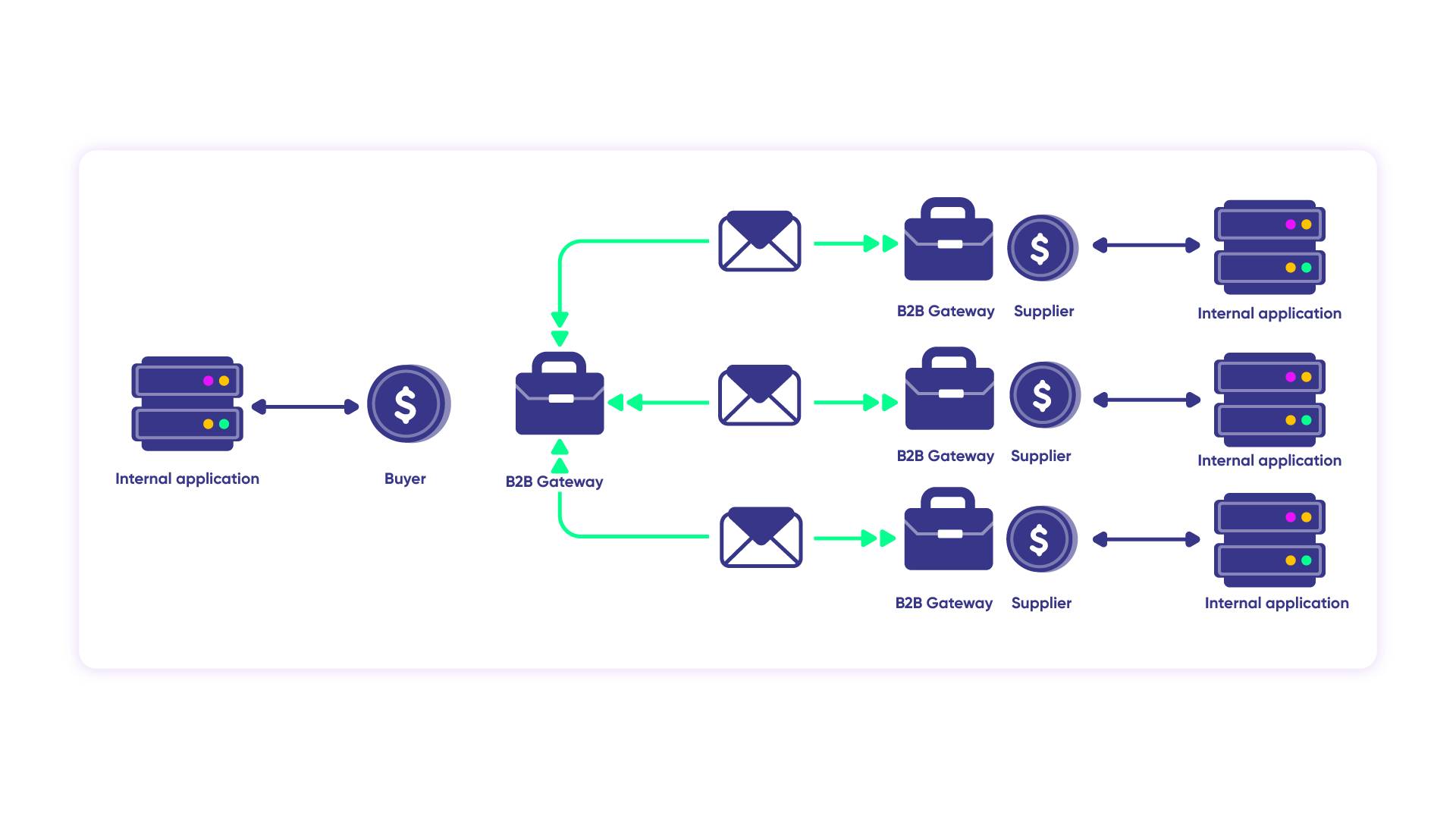
Consider an automobile manufacturer that wants to procure raw materials.
For this company, having to procure raw materials means contacting different suppliers for the pricing and availability of the raw material (QPA – Query for pricing and availability), getting quotations from them, comparing them, choosing the supplier, sending the purchase order (PO), making the payment and finally receiving the purchase receipt(PR).
In order to do all this, they spend months on end procuring even the most basic raw materials. It also means that there is a manual intervention for all of the above processes leading to more delays and costly errors.
While sending files like POs, QPAs, or PRs, there was no standard way to interpret the incoming files and make sense of them.
So they decided to finally put in place an integration for this.
The implemented integration worked as follows:
- The automobile manufacturer broadcasted (an asynchronous message) a QPA of a particular item to various suppliers over their B2B gateway.
- When the QPA was sent out, an entry for it was made in their own backend ERP.
- After receiving the query, the suppliers checked the availability of that particular item in their inventory database. They then sent the buyer a reply with quotes- each containing the price and availability of that particular item using their own B2B Gateway.
- Communication between the suppliers and buyers represents a point-to-point connection. The information transmitted was easily understood and interpreted by the different companies with the help of B2B gateways. This was because the data exchanged was in a standard format, either EDI or XML.
- Once the supplier with the appropriate quote was shortlisted, a PO was sent to the selected supplier. The supplier then confirmed the order and sent back a request for the payment (a synchronous message).
- The buyer, after making the payment, received an acknowledgment in the form of a PR from the supplier.
Here the buyer benefited by getting the best price from a range of suppliers and the suppliers benefited by getting to work with an established buyer.
Note: B2B Gateways are applications that enable businesses to provide secure, reliable and real-time data interchange between internal and external systems or applications of their trading partners. The B2B Gateway application serves as a central point for the validation and transformation of multiple data sources through interoperability standards like XML and EDI.
Use Case 2
Here’s another use case for a situation many companies face today.
An e-commerce company, let’s call it Company A, has outsourced its website development to another company, company B. Company A uses Jira, an issue tracker to manage its day-to-day operations. Company B on the other hand uses Azure DevOps.
Now problems started to crop up when they tried to collaborate and share information with one another.
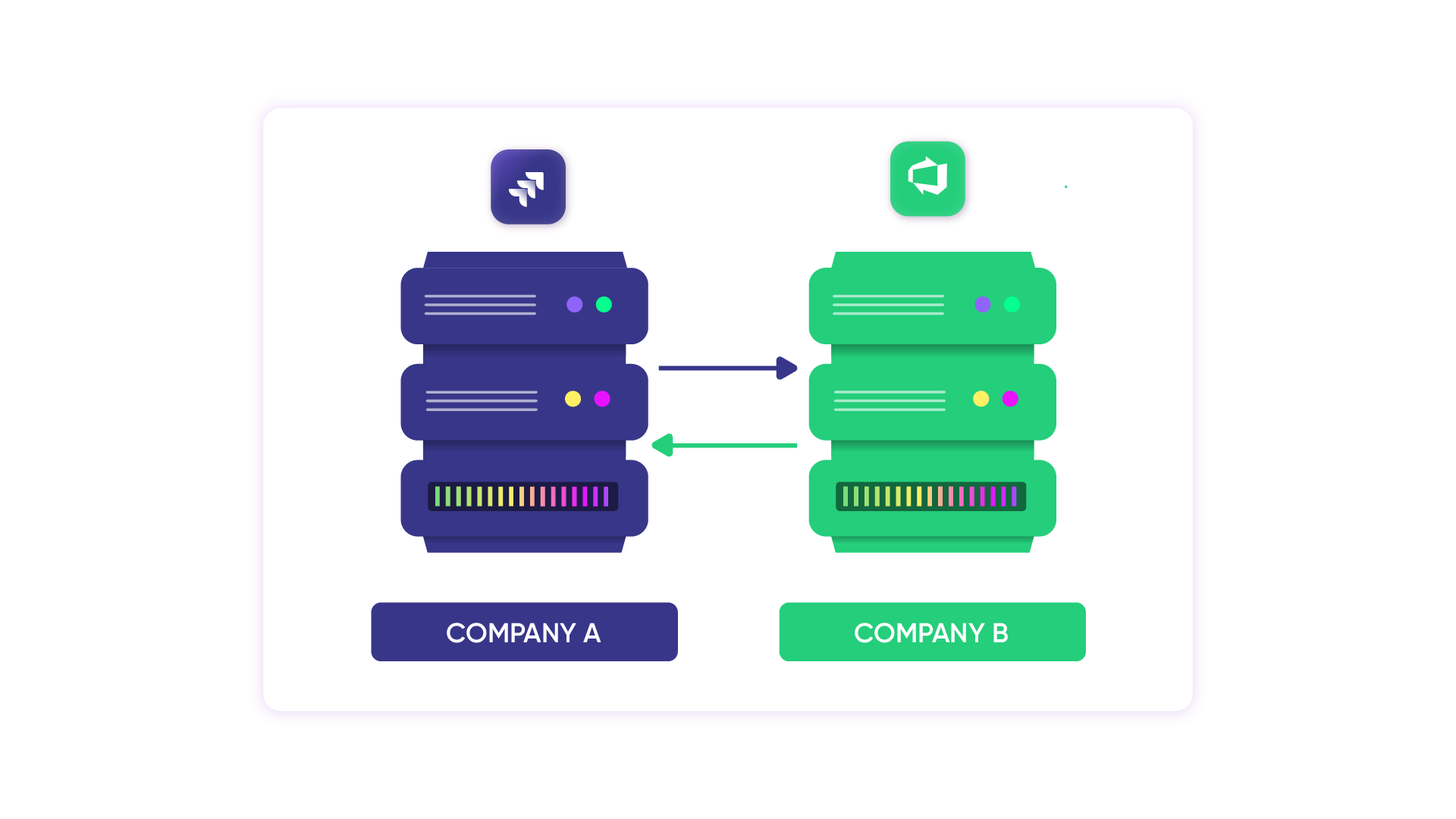
This is because the information regarding issues/ work items passed between them was through phone calls or emails and it had to be updated on their respective issue trackers (Jira/ Azure DevOps) manually.
This manual way of copy-pasting information was leading to errors- data was getting lost, altered, or even misplaced. It increased friction between their teams and started to negatively impact their business. Customer complaints were taking time to resolve and Company A’s SLA was constantly declining.
So they decided to opt for an integration solution here that would help them overcome this current challenge.
The solution ensured that:
- Information was passed bi-directionally between the 2 issue trackers with the help of pre-defined mappings, for example: ‘issues’ in Jira were mapped with ‘work items’ in Azure DevOps. Additional mappings for custom fields were also provided, so ideally “any information” could be passed between them.
- Company A had a holistic view of information passed between the different issue trackers. This meant that proper status updates about issues were triggered and updated on both Jira and Azure DevOps automatically.
- Both companies had autonomy while collaborating. This meant that they both could control what information was passed between their issue trackers and how the incoming information was interpreted.
- Information was exchanged bi-directionally and in real-time.
- The data exchanged was secured by means of appropriate encryption methods.
- The data lost between transitions was correctly recovered without manual intervention.
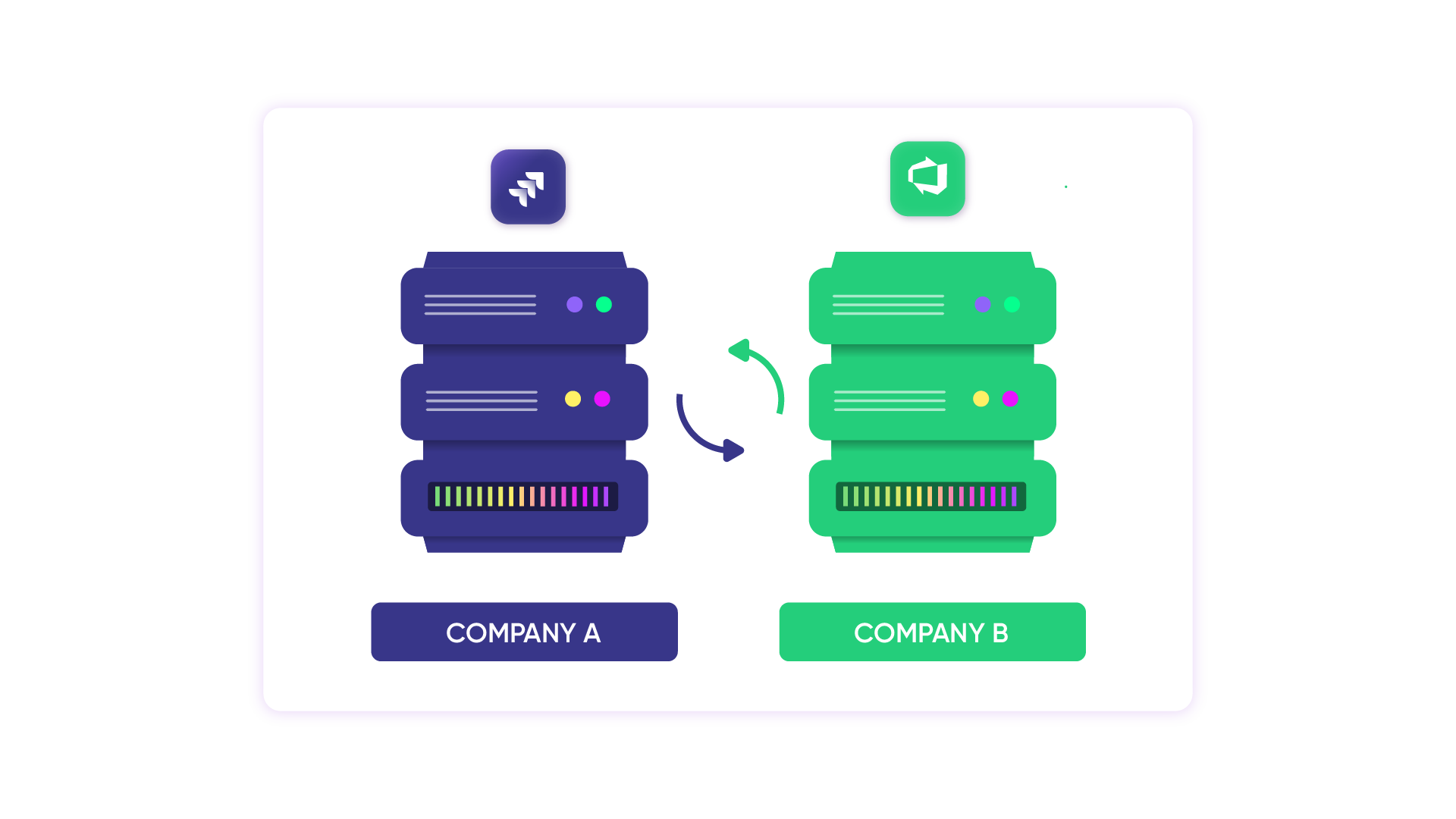
Such a B2B integration solution started to positively impact company A’s SLA leaving it with happier customers. It also helped reduce manual data entry errors and both companies could enjoy seamless and frictionless communication with each other.
Note: Here Exalate can help streamline collaboration and communication between Azure DevOps and Jira as mentioned in the use case above.
In addition to the above 2 examples, B2B integrations can help a wide variety of industries.
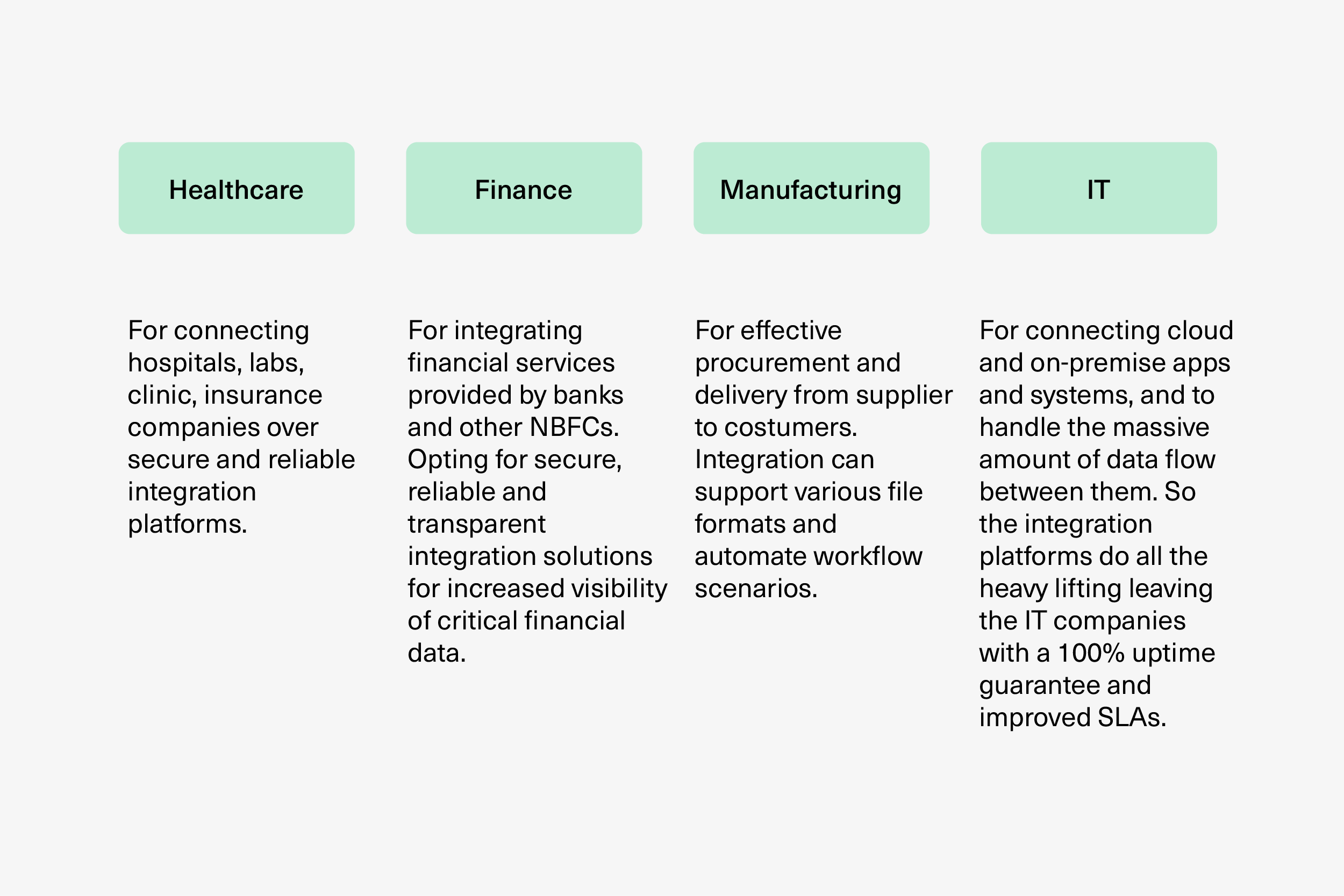
B2B integration can benefit almost any type of industry irrespective of its location, size, or domain. But it definitely has challenges that need to be acknowledged beforehand.
The Challenges of B2B Integration
Whether you have an in-house B2B integration solution – which already runs high on maintenance costs, or integration services through the cloud, they both face some challenges when it comes to implementing them end-to-end in a business ecosystem.
- The primary reason for this is the vast number of technologies that keep evolving. So does the number of protocols and standards. This always remains the primary challenge for B2B integrations.
- Today’s organizations have their eyes set on how critical business data fits into the broader business context, so having a “100% holistic view of critical data” is challenging.
- Including the ever-shifting regulatory and governance concerns into integrations is itself a big challenge.
- There’s always a huge number of business documents to exchange.
- Big data creates problems for integration due to its sheer volume.
- Smaller companies often lack the budget and resources for end-to-end business integration solutions.
So how do all these puzzle pieces fit together? How does B2B integration actually work taking into account such challenges?
How B2B Integration Works
In simple terms, B2B Integration involves pulling information from source systems or applications and transferring/ transforming it onto target systems. These systems can be internal within the company or can be external systems outside company borders, likely of their trading partners, customers, or suppliers.
To lay the groundwork for the integration process, the following can be the possible driving steps.
B2B integration Steps

Decide Who to Integrate With
This involves making decisions about which trading partners/ suppliers/ vendors/ customers you want to integrate with.
Essentially it means identifying the systems or applications that these companies use. The network layouts and APIs provided by their applications must be taken into account before proceeding.
Pull Data From The Source System
This step involves pulling data from source applications. This data can be gathered through APIs or web services. The way this data is extracted depends on the deployment model of the integrating systems. The data can be as simple as information about a ticket raised by a customer, to as complex and important as monthly sales figures.
Decide on The Data You Want to Exchange
Choose what documents you want to exchange and their formats in terms of B2B specifications like EDI, EDIFACT, Custom, and so on.
In addition to documents, it’s also necessary to consider the format of the data to be exchanged. Not all data is in the standard format, this is because companies generally use their own proprietary formats (like iDoc, flat files, etc). So there is a need to convert this data into standard formats like CSV, JSON, XML, etc.
Agree on a Common Transport Protocol
It is important for the communicating parties to agree on the transportation medium and messaging protocols (like FTP, HTTP, etc) for effective integration.
In addition, the following questions can be your drivers for this step:
- How big is the file to be transferred?
- Is real-time synchronization of data required?
- Does the information contain sensitive or critical business data?
- Does the communication need to be asynchronous or synchronous?
For the transfer of files or information between systems, security is important. So proper encryption mechanisms for files must be in place. Protocols like HTTPS for secure file transfers are a must. In case an unencrypted transfer between two systems needs to happen, then it must be encrypted through a VPN (Virtual Private Network).
Make Sense of The Information in The Target System
The last step is when the data reaching the target system is converted, made readable, and absorbed in the end-to-end business process and delivers value. Sometimes companies use web portals, making the process of extraction, transformation, and ingestion of data into the business ecosystem easier.
The way data is interpreted at the target system is important, because it is extremely crucial for showing the benefits such integration will bring.
Positive impacts on SLAs, happier customers, faster onboarding of new trading partners, and faster business approvals, all indicate your integration process is right on track.
Deciding on the type of communication between integrating applications and systems is also necessary.
For synchronous communications, like payment gateways, the sender application waits for a response from the receiver application and doesn’t proceed until it receives one. Here, communication timeouts are a major bottleneck.
But for asynchronous communication, the sender application proceeds and doesn’t wait for a response from the receiver application. This can be used when there is a simple purchase order receipt that needs to be transferred across systems. So there is no dependency between them.
For the above steps, the way participating systems are connected is also important to consider.
Connection Models
The integrating systems can connect with different types of connection models. Following is a brief description of the way these models are implemented.
Point-to-Point Connection

This model represents the integrating systems to be directly connected with each other individually. This format is traditionally EDI-based. Here, data is extracted from one system, modified into another format, and sent to the targeted system.
Its simplicity is what makes it easier to adopt. But the systems are tightly coupled so there is a dependency between them.
Hence, scaling this solution becomes difficult. Too many point-to-point connections give rise to a star/ spaghetti integration mess.
This is an ideal model for companies that don’t have complex business logic to run.
One-to-Many Connection
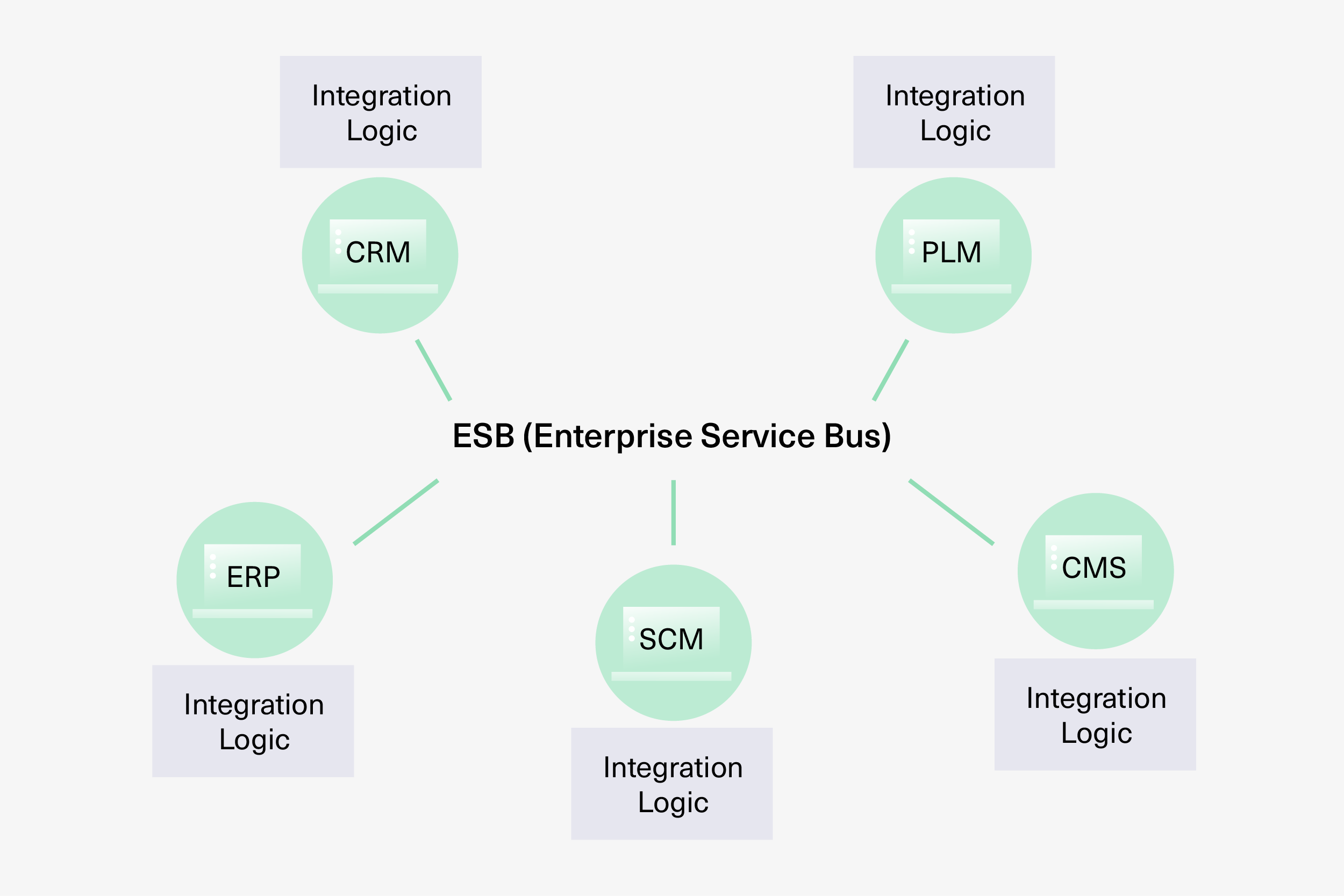
This involves a central entity that serves as a common user interface layer connecting other subsystems. The central entity can be called an ESB (Enterprise Service Bus).
The ESB works as a middleware that glues multiple subsystems together and acts as a messaging backbone. This model can be used for integrating complex internal systems of large companies or can be used over the cloud too.
The main advantage of this type of connection is that the ESB or middleware can be easily replaced without affecting the other subsystems.
Hub and Spoke Connection
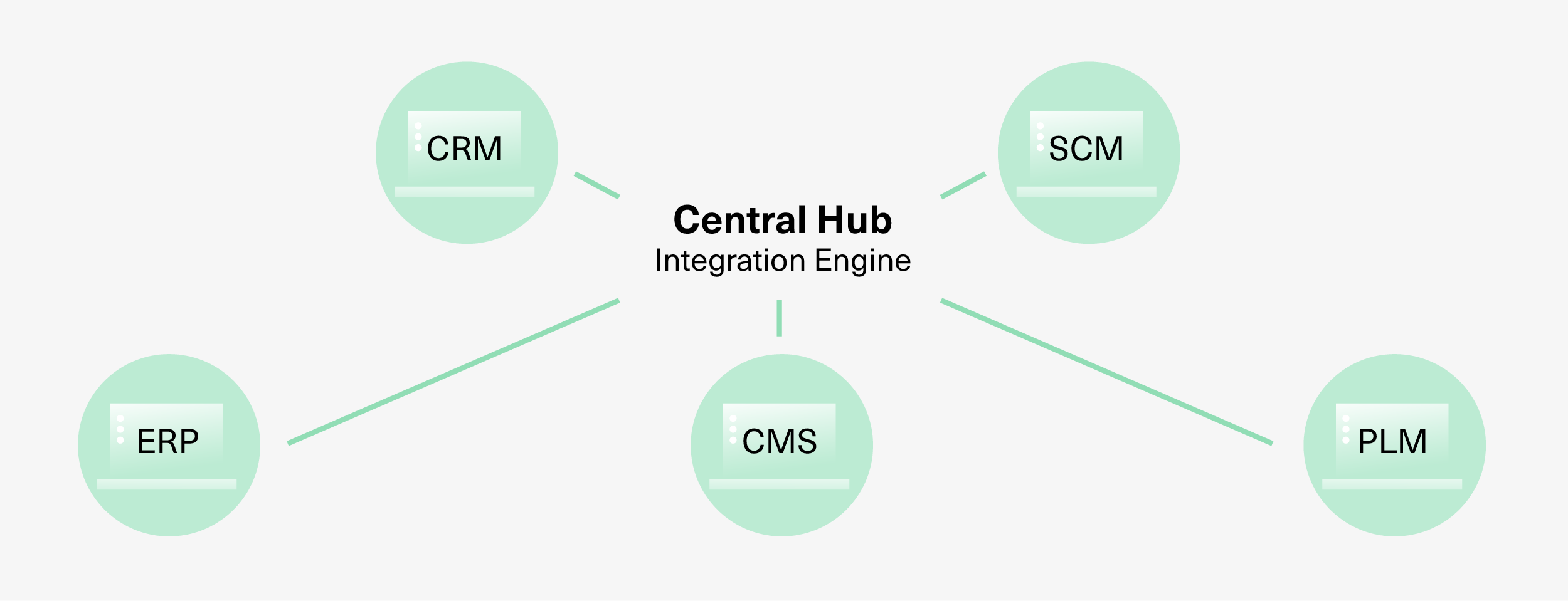
In this, the central hub acts like a message broker through which all the requests or messages are passed. The hub has an integration engine that serves to translate messages for its spokes (multiple subsystems) helping them communicate with each other.
The hub plays a traffic cop role, mediating, filtering, and transferring information. Here, spokes can be easily added without disturbing the architecture. But the downside to this is that an additional hop in the form of a hub increases latency. This model is widely used in e-commerce and financial services.
Today, modern integration solutions and platforms make these connection models seem simple but the reality is more complicated than that. A single model may not be sufficient since there can be many diverse technologies in the picture. So companies sometimes combine all 3 patterns in their integration ecosystem.
Thankfully there are a growing number of cloud platforms (Integration Solutions Providers) that offer their services to handle such complex integrations.
Below are the most common deployment models
iPaas (Integration Platform as a service)
iPaas, also called Integration-as-a service is a set of cloud-based integration solutions for building and deploying integrations in the cloud. You can integrate your systems, data, and processes as an all-inclusive package, which is accessible through common interfaces.
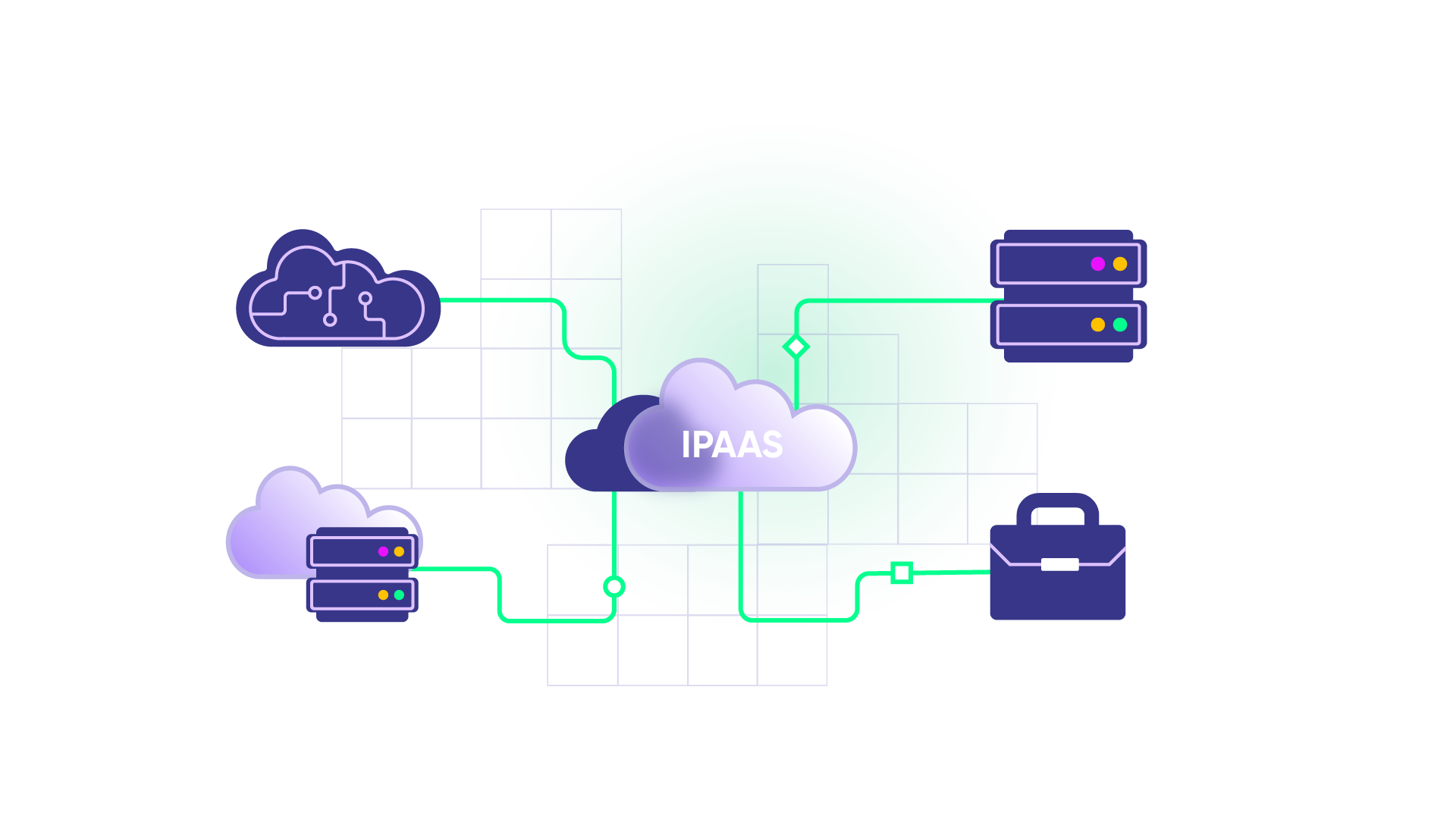
It has a library of pre-built connectors which help disjunct applications to connect and communicate with each other, without having to bother about how they are hosted (on-premise/ cloud).
Hybrid Integration Platform (HIP)
This is a generic version of iPaaS offerings. A hybrid integration platform enables cloud-based solutions (public /private) or on-premise systems to seamlessly integrate with one another and work as a single unit.
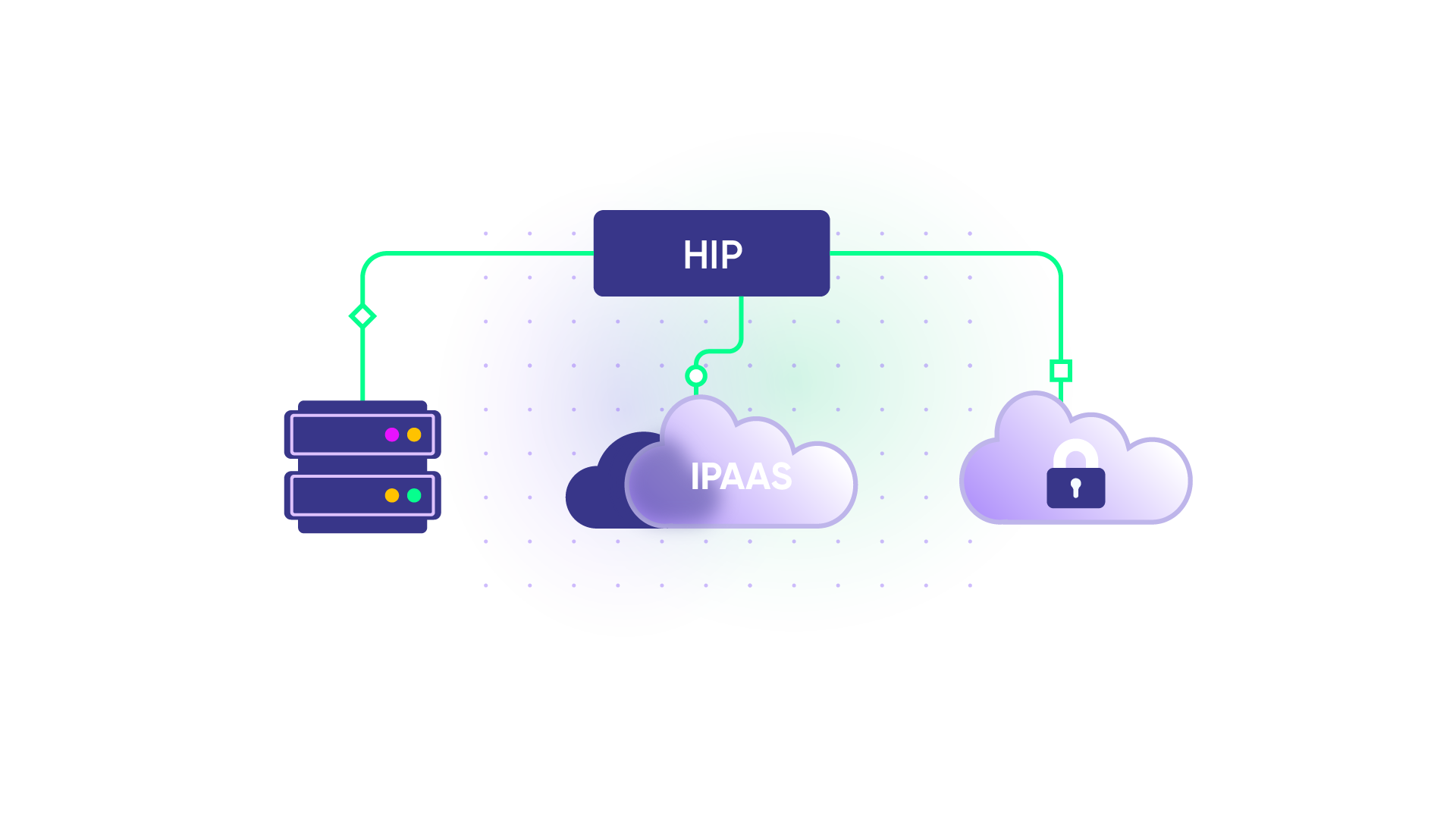
They are formed of 2 very basic components:
- Protocol connectors – to handle various protocols like HTTP, TCP, etc.
- Standard data formatter- to handle various data formats like XML, JSON, etc.
There are a lot of players in the market offering these integration services. Exalate is one that overlaps both HIP and iPaaS. It helps integrate different work management systems to bi-directionally synchronize information and data flow between them. It is the leading cross-company integration solution promoting SIAM practices (we will discuss them in a bit) in a multi-sourced environment.
How to Pick The Right B2B Integration Solution
We have already seen why choosing a B2B integration solution can be a wiser option for a company in comparison to building it themselves. So what must companies actually look for in an integration solution?
Let’s have a look at the most important considerations
Deployment method of integration
While choosing a solution, it’s important to understand the deployment model you prefer.
There can be 3 typical models of deployment – on-premise, cloud, and hybrid.
On-premise means that the integration solution is installed, deployed, and managed on the organization’s servers. These servers can be on-site or remote.
A cloud model means the solution is provided “as-a-service”. We have already seen iPaaS gaining momentum.
Sometimes a hybrid approach – combining the 2 options above might work the best.
Though the cloud provides a faster implementation than on-premise solutions, flexible/ complex customizations or unique integration scenarios are not always easy to implement using the cloud. Companies also prefer on-premise solutions when they want added security for their integrations and don’t want to lose control of working in their own environment.
Cost of the integration solution
This is one of the major drivers for adopting and choosing an integration solution. So maintenance costs, upgrades, IT support costs, and upfront costs must all be considered before making the decision.
Also, the training costs of staff and employees must be taken into account. As an essential part of this exercise, you can even perform a measure of due diligence for risk assessment of how your integration approach has impacted the organization’s human capital perspective.
Security provided by the integration solution
In today’s world, data is currency, so its security is paramount. Whatever the industry, companies are always looking for solutions with inherent security mechanisms. Private VPNs, HTTPS, advanced authentication tools, secure file transfers, and role-based access mechanisms are much sought after. Additionally, ISO 27001 certification is also preferred.

Additionally, your security concerns are also related to how highly regulated your industry is. It means taking into account any compliance, regulatory, and GDPR considerations.
The flexibility offered by the integration solution
Every business is unique, and so are its integration requirements. Having an integration solution that addresses all of them is like icing on the cake. Flexible customizations, control over what information is passed between systems and how incoming information is interpreted, covering unique business cases and highly specialized integration scenarios all must be looked out for while choosing a solution.
Adopting IT in business comes with a cost associated with it. So, when it comes to getting good returns on your investment, it’s important to make the right choice.
As part of flexibility, the B2B Integration solution you choose should allow you to create complex integrations with the help of AI-powered chatbots, copilots, and virtual assistants.
So it makes sense to spend a little time thinking about how you can incorporate some best practices in your B2B integration effort.
B2B Integration Best Practices
It’s important to choose newer technologies and solutions when it comes to integrating business data, applications, or systems. This is because sometimes, even vendors who previously provided support for legacy systems like older EDIs might no longer find it feasible to repair, maintain, or support them.

Moreover, different applications do not support the built-in mechanisms to interact with each other, so they require technology to do so. However, the problem with technology is that it will become obsolete very soon. Modern technologies like APIs are evolving fast. So businesses must allow for integration between these modern designs of integrating applications.
Cloud-based B2B integration solutions are gaining popularity. This is because cloud-based models are inexpensive compared to on-premise ones. This is true even while scaling because the multi-tenant architecture cloud applications support ensures true scalability and helps companies grow. So it’s the best choice companies can consider.
As a general rule of thumb, it’s important to take a step back and think about how B2B integration can help your company and what value it can add. It means having to understand your business needs and requirements by involving stakeholders and devising a strategy for it.
B2B integration does not happen overnight. It’s a well-thought-out, well-devised, and well-structured process. As a business, we understand this and spend time architecting and implementing it correctly. Take the help of industry experts or professionals if needed.
B2B integration also involves evaluating or re-evaluating your business processes and finding a solution that can complement them in the best possible way. You do not want an integration solution that will force you to overhaul your processes and workflows entirely.
It’s also important to think about how the solution will cater to the future of your business. Doing this is slightly tricky, but it’s important to understand how the solution will scale as your business grows because you don’t want to end up with a solution that is too rigid to grow with your business.
The most crucial aspect of this is choosing a solution to which your organization can adapt easily. It must be easy to use and intuitive enough for all users of your organization. It must not take a lot of time to set up and get running.
The Future of B2B integration
Businesses are slowly beginning to offload their heavy B2B lifting to seasoned integration experts. Organizations will no longer struggle to have frictionless communication with their partners. They will no longer have to wait to add value to their customers because they couldn’t support a customer’s requested data format/ protocol.

The future of B2B integration is more than simply bringing technology to businesses. It is making businesses and their interactions more intuitive, reliable, and agile.
In response to business needs, B2B integration services are being developed in the following ways.
- Integration services no longer support merely exchanging and transforming data. The integration platforms now support a whole gamut of suppliers and their systems, even things that are connected to their networks, like IoT devices.
- More and more organizations are slowly moving towards outsourcing their B2B integration services to be managed by third-party providers with the right expertise.
- These services are now delivered over the cloud, on-premise, or over a hybrid deployment model. The exponential growth of cloud-based services has opened up a vast number of possibilities wherein the various integration disciplines like B2B integration, Application-to-application (A2A), ETL ( Extract-transform-load), and the like are getting blurred. This is an age where a single integration platform can serve the needs of almost all kinds of integrations.
SIAM in The Context of B2B Integration
Companies are moving towards outsourcing to increase operational efficiencies. However, managing their third-party vendors and service providers is a difficult task. SIAM works towards bringing clarity to this chaos.
SIAM – Service Integration and Management essentially means management and governance of services in a multi-sourced environment. It introduces the role of a “service integrator”, working towards aggregating and consolidating the services provided by the service providers to deliver value to the customer. It is a single logical entity responsible for the end-to-end delivery of services.
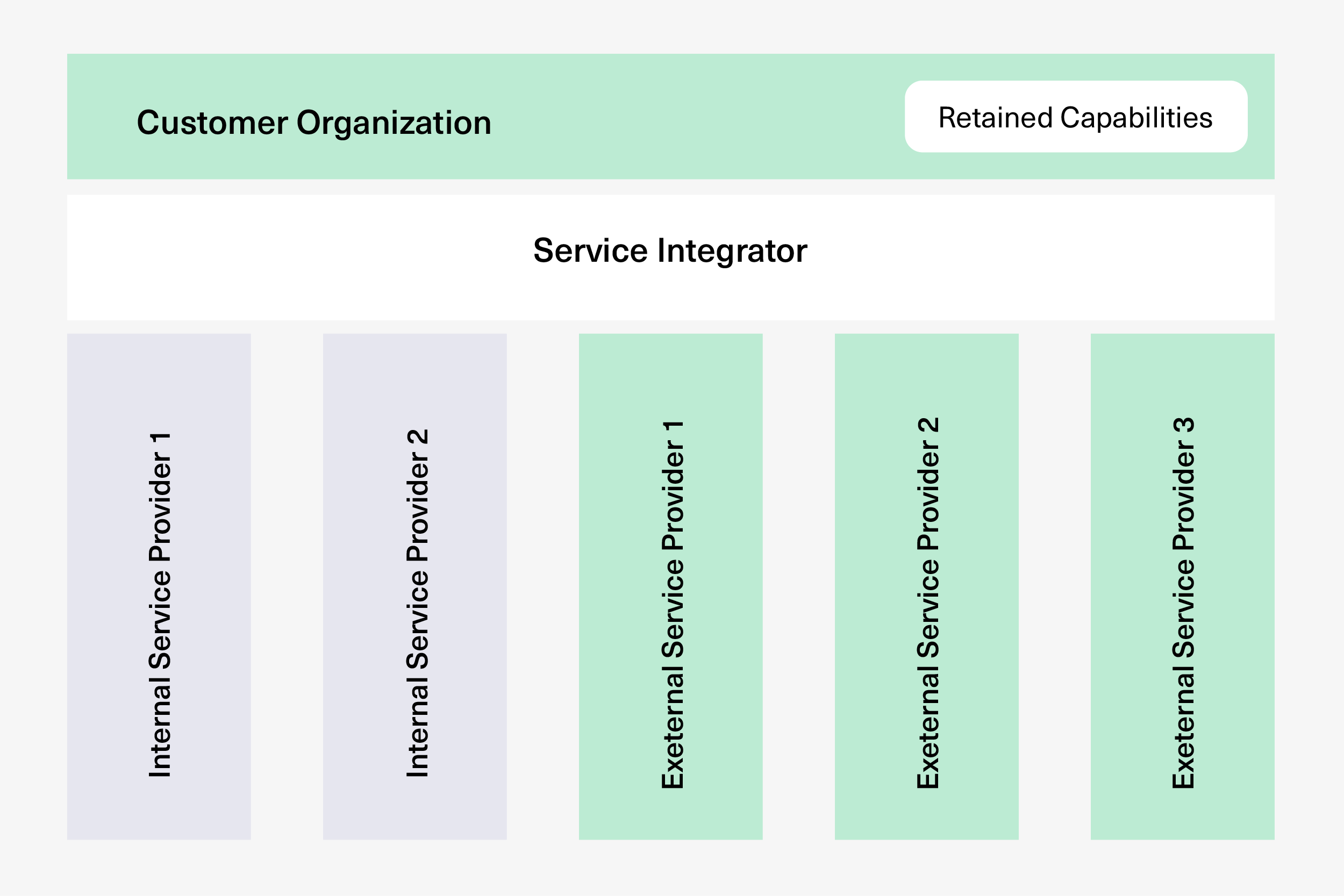
SIAM has been widely adopted by many companies and is slowly gaining its stronghold due to the immense value it brings to multi-sourced environments. Using such a strong methodology in B2B integrations would mean having to deliver the same standards and values that SIAM sets for your integration effort.
So, integration solution providers must strive to adopt SIAM methodologies and best practices to deliver increased value to their customers.
Furthermore, as SIAM’s demand is increasing in a multi-vendor outsourcing ecosystem, the players already adopting SIAM put continuous efforts into enhancing their solutions by including B2B integrations.
There is also an increased awareness in organizations to use ITIL 4 (Information Technology Infrastructure Library) because of the immense benefits it brings to providing IT services end-to-end and co-creating value for customers. This has also led to a boost in organizations adopting SIAM and in turn, using B2B integrations because SIAM works towards creating the same value as ITIL in a multi-sourced environment.
Conclusion
There is only so much you can learn about B2B Integration. It’s because of the immense scope and the areas it covers. It’s no longer limited to a company type, domain, location, or size and is ever-evolving to include newer technologies and protocols.
The advent of the Internet and, thereafter, the cloud has changed the dynamics of B2B integration.
This guide served to explain a brief history of this B2B integration, what different technologies are used for it, and how they evolved. We also saw how organizations tackle B2B integration and how approaching professionals who deliver integration capabilities is recommended rather than building an integration in-house.
And most importantly, we saw how we can make B2B integration drive huge benefits for the organization by adopting SIAM and ITIL 4 methodologies.
Recommended Reads:
- Service Integration and Management (SIAM)
- eBonding Integration: The Ultimate Guide to Flexible Data Sync
- How to Build an Effective SIAM Operating Model
- ITIL 4 and Service Management: The Right Choice for Your Service Management Approach
- ServiceNow eBonding: The Complete Guide
- The Complete Blueprint for Aligning Your Service Desk and Development Teams (Process Integration and Best Practices)

